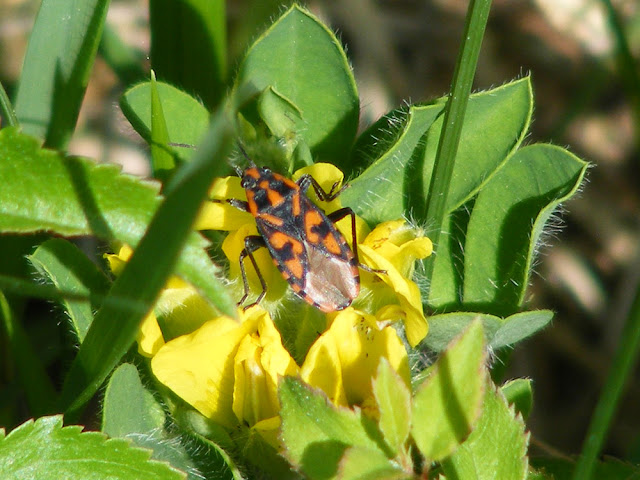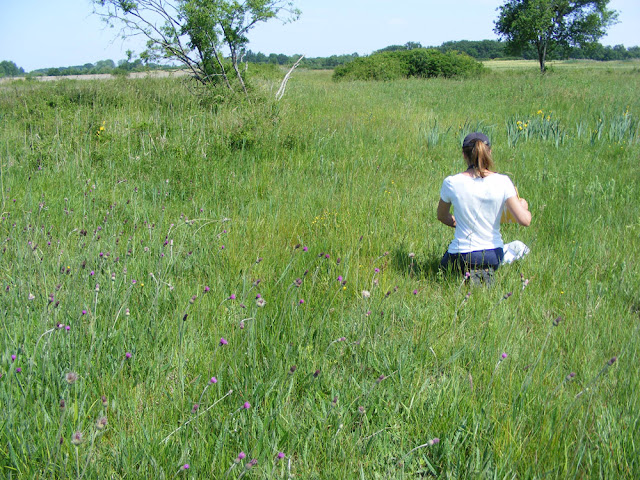 |
Earlier in the year my Ukrainian dipterist contact Valery Korneyev put out a call for help in collecting specimens of Common Fleabane Pulicaria dysenterica that had the galls of a Myopites sp fly on them. I offered try and find the plants, but wasn't really familiar with the species so I called for help in my turn. Valérie Lagny, an independent botanist working in the Brenne, came to my aid. She was surveying the Etang Purais on Friday 2 June and said I could tag along. She would show me the plant, which is abundant on the site.
Etang Purais from the south.
The Etang Purais is near Lingé, about 20 minutes from Preuilly. It's part of the Chérine Nature Reserve, run by the Ligue pour la Protection des Oiseaux (LPO). When I arrived I was a bit surprised to see a coach parked at the entrance to the hide. It turned out that there was a school visit and the hide at Purais is the only one on the Reserve large enough to accommodate a bus load of kids. I hoped the real birdwatchers in the carpark were not too put out.
Valérie L and Thibault walking through the site.
Valérie L was waiting for me in the carpark, munching on a banana. She suggested we move on to a small farm on the other side of the étang, where the public is not allowed to go. Then her colleague Thibault, one of the Reserve ecologists, turned up and we set off through the long grass to count orchids, check rare species of flora and familiarise me with fleabane. It took us 3 hours to do 3 kilometres.
Cretan Soldier Bug Spilostethus saxatilis (Fr. Punaise rouge à damier) on Cytisus lotoides (Fr. Cytise couché), a rare plant that favours calcareous soil.
There was lots of fleabane, but no sign of the flies I was looking for, nor the galls they make. It was clearly too early in the season, so I will have to ask permission to go back in late July or early August, when the plants are flowering and the flies are on the wing.
Common Fleabane Pulicaria dysenterica (Fr. Pulicaire dysentérique).
Professor Valery K is the Head of Entomology at the Schmalhausen Institute of Zoology of the
National Academy of Sciences of Ukraine in Kyiv, but currently living as a displaced person in Berlin. I have never met him in person, but we've known each other online for nigh on two decades and we are the same age. He and his project to review the genus Myopites are being supported by the Humboldt Foundation Researchers at Risk fund. The Myopites fly is tiny, just a few millimetres long, and the galls they make even tinier.
The largest European Buckthorn Rhamnus cathartica (Fr. Nerprun purgatif) I have ever seen. Normally they are just a bush, not a small tree.











1 comment:
"It took us 3 hours to do 3 kilometres." Dat's my kinda walk! One KPH!!
There are some nice fleabanes at the end of the La Celle-Gurnard camping/vide grenier site around the lake... or mud pond probably atm!
I always wondered why they added that coaches only lay-by.... but, kids need that sort of activity and France is very good at it!!!
Post a Comment